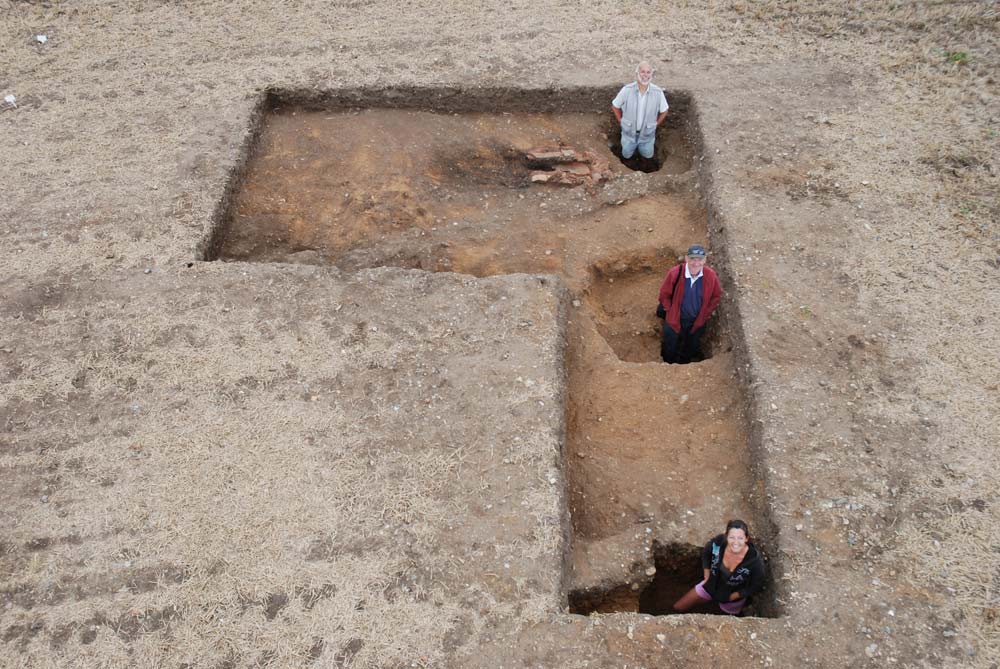Those pesky Romano-British — always causing problems. First, they didn't want the Romans around; then, they couldn't get enough of the culture once the Romans picked up and went home.
One thing that was certainly true in the story of Roman Britain was that even though a large part of the Island was influenced by Roman culture as brought over by well armed Roman soldiers, it certainly didn't mean that all Roman settlements in Britain were the same. That is the sort of flavor behind the latest announcement out of Norfolk, where a team of archaeologists have announced the discovery of a truly unique structure near a stronghold of a onetime enemy of Ancient Rome.
Venta Icenorum had its fair share of problems, as seen by Roman eyes. To start with, it was very much in the realm of influence of the Iceni, a tribe that had quite a list of grievances against the Roman occupiers/settlers. They put up fierce resistance to the invading armies of Claudius but ended up a client kingdom under the historically not-quite-significant Prasutagus. Once he was out of the way, the Romans figured they didn't need another client king and tried to impose their will in full. The result was the revolt of Boudicca, a flashpoint and shining star in the British resistance to Roman occupation.
The determined Romans took care of Boudicca, of course, as they did with most insurgents and went about their business for another few hundred years before pulling out and trying (in vain, as it turned out) to keep Rome itself from falling under the hammer.
 The Iceni, then, according to the archaeologists, built a wing-shaped structure the likes of which hasn't been found in all the diggings in Britain since ancient times. The elevated building has a central room and another, rectangular, room out of which stretch two wing-shaped rooms. Convinced that the Romans built along lines that don't match this new discovery, the archaeologists insist that they're on to something entirely new.
The Iceni, then, according to the archaeologists, built a wing-shaped structure the likes of which hasn't been found in all the diggings in Britain since ancient times. The elevated building has a central room and another, rectangular, room out of which stretch two wing-shaped rooms. Convinced that the Romans built along lines that don't match this new discovery, the archaeologists insist that they're on to something entirely new.
For their part, the Iceni took their own sweet time accepting the Roman way of life, including the Roman way of worship. Iceni gods tended to be of the natural variety, and the building's likely wind-swept location might be a clue as to the possibly religious nature of the activities that might have taken place within. What the archaeologists do know is that the central room contained more support than the other rooms, based on what remains of the other rooms' supporting structures (not much). So was the building a small building that had add-ons, or did the people spend most of their time in the central room, or was it something else entirely? (Given the paucity of other clues, I would think that it was something else entirely.)
This likely wasn't an isolated building, either. Based on examinations of aerial photographs, the archaeologists are suggesting that the building was part of a small complex of at least four buildings in proximity. Given this data, we might conclude that the building was indeed a temple, on a sort of hill, looking over the other buildings and the surrounding countryside.
However, the archaeologists are quick to point out as well that Iceni buildings didn't look a whole lot like this "temple," either. They might have lived in it, but they might not have built it.
So if the Romans didn't build this thing and neither did the people who lived there, what are we to make of this information? Given that the Romans weren't very likely to deviate from their propensity to be creatures of habit, I would conclude that it was the Iceni who built the thing, probably under the influence of neighbors. More information is needed, however.
No comments:
Post a Comment